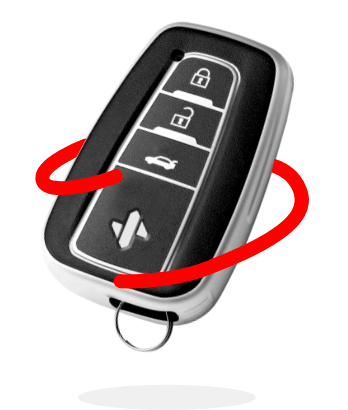Auto insurance is a fundamental aspect of responsible car ownership, offering financial protection and peace of mind in the event of accidents, damages, or liabilities. While most vehicle owners opt for standard car insurance policies provided by external insurance companies, an alternative option is self-insured car insurance.
In this post, we’ll delve deeper into the concept of self-insured car insurance, explore its unique features, and look at how it differs from standard car insurance.
SELF-INSURED CAR INSURANCE MEANING
Self-insured car insurance is a distinct approach to risk management, where individuals or organizations decide to take on the financial responsibility of potential claims themselves rather than transferring the risk to an external insurance provider. They become their own insurers by setting up a self-insurance fund to cover possible losses instead of paying regular premiums to a traditional insurance company.
This insurance method is more commonly adopted by large corporations, government entities, and other financially robust organizations that maintain sizeable fleets of vehicles.
Their primary motivations for embracing self-insured car insurance are typically cost savings, greater control over the insurance program, and the ability to customize coverage to suit their specific needs.
HOW SELF-INSURED AUTO INSURANCE WORKS
1. Establishing a Self Insurance Fund
The foundation of self-insured car insurance lies in establishing a self-insurance fund. This fund acts as a reserve that will cover any future claims.
To create the fund, an organization must analyze historical data, assess potential risks, and calculate the amount necessary to self-insure adequately. The vehicle fleet size, historical accident data, and expected future losses are essential factors in determining the fund size.
2. Meeting Regulatory Requirements
Before becoming self-insured, entities must comply with specific regulations and show their financial capacity to cover potential claims.
These requirements vary across jurisdictions, but they usually include providing proof of financial responsibility and maintaining a certain level of liquidity to ensure the ability to meet claims.
3. Implementing Risk Management Strategies
Self-insured entities often adopt comprehensive risk management strategies to reduce the likelihood of accidents and claims.
These strategies may include investing in driver safety training programs, monitoring and evaluating driver behavior, implementing regular vehicle maintenance checks, and employing telematics technology to track vehicle usage.
4. Managing Claims Internally
In the event of an accident or claim, self-insured entities handle the entire claims process internally. This process involves assessing the damages, determining liability, and compensating the affected parties using funds from their self-insurance reserve.
By managing claims in-house, self-insured entities have greater control over the resolution process and might expedite claims settlements.
DIFFERENCES BETWEEN SELF-INSURED CAR INSURANCE AND STANDARD CAR INSURANCE
Premium Payments
The most apparent distinction between a self-insured vehicle and standard car insurance is the payment structure.
In standard car insurance, policyholders pay regular premiums to an external insurance company, regardless of whether they make any claims. The insurance company assumes the risk and financial responsibility for these premiums.
In contrast, self-insured drivers or organizations don’t make premium payments. Instead, they allocate funds to their self-insurance reserve, effectively setting aside money to cover potential losses.
Risk Assumption
With standard car insurance, the insurance company assumes the risk associated with potential claims. The policyholder transfers the financial responsibility to the insurer, and in exchange, they pay premiums for coverage.
With self-insured car insurance, the risk remains with the self-insured entity. They take on the financial burden of claims and rely on their self-insurance fund to cover losses. This approach requires a strong financial standing and the ability to handle unexpected high-value claims.
Flexibility & Control
Self-insured auto insurance offers greater flexibility and control over the insurance program. Since the self-insured entity manages the claims process internally, they have more direct control over coverage options, risk management strategies, and the overall claims experience.
This can lead to more tailored insurance solutions that align with the entity's specific needs. Self-insured organizations can respond more quickly to changing business requirements and adapt their insurance policies accordingly.
Regulatory Requirements
Standard car insurance policies are subject to various regulations and guidelines imposed by insurance regulators to protect consumers. Meanwhile, self-insured car insurance requires adherence to specific regulations that vary from one jurisdiction to another.
These regulations often demand a demonstration of financial capability and liquidity to cover potential claims. Entities considering self-insurance should consult with legal and financial advisors to ensure compliance with these regulations.
Coverage Limits
Standard car insurance policies typically come with predefined coverage limits and deductibles. In contrast, self-insured car insurance allows entities to set their coverage limits based on the size of their self-insurance fund and their financial capacity.
This means that self-insured entities have more flexibility in defining their coverage limits and can adjust them as needed.
WHICH STATES ALLOW AUTOMOBILE SELF-INSURANCE?
Laws and regulations regarding car insurance differ from one state to another in the United States. Self-insuring your vehicle is contingent on your state’s specific rules and regulations.
Some states may permit individuals and businesses to self-insure their cars, provided they meet specific financial requirements and demonstrate the capacity to cover potential claims. On the other hand, other states may not have provisions for self-insured car insurance or may impose stringent conditions that make it impractical for most entities to pursue this option.
Before considering self-insurance for your vehicle, it’s crucial to thoroughly research and understand the legal requirements and options available in your state to ensure compliance with local laws.
Self-insuring your vehicle is a distinctive approach to managing the risks associated with vehicle ownership. By assuming financial responsibility for potential claims and creating a self-insurance fund, entities can gain greater control over their insurance program and potentially achieve cost savings in the long run. However, as you’ve seen, self-insured car insurance is most suitable for financially robust organizations with many vehicles.
For individual car owners and smaller businesses, traditional car insurance remains the more practical choice because of its accessibility, standardized coverage, and professional claims management services provided by external insurers. When considering self-insured car insurance, entities must conduct thorough risk assessments, establish adequate self-insurance funds, and ensure compliance with regulatory requirements.
Ultimately, consulting with insurance professionals and risk advisors is essential for making an informed decision that aligns with the entity’s unique circumstances and risk appetite. Remember, both self-insured car and standard car insurance serve the same ultimate purpose: protecting you and your assets on the road.
If you need help finding the best standard car insurance coverage for the best price, start by speaking to a SimplyIOA agent at 833.872.4467 or get an auto insurance quote online now.










